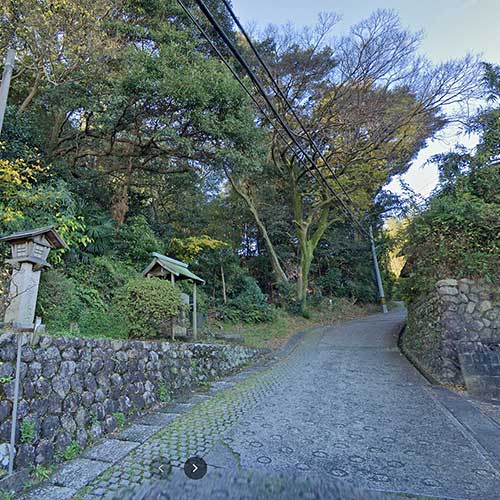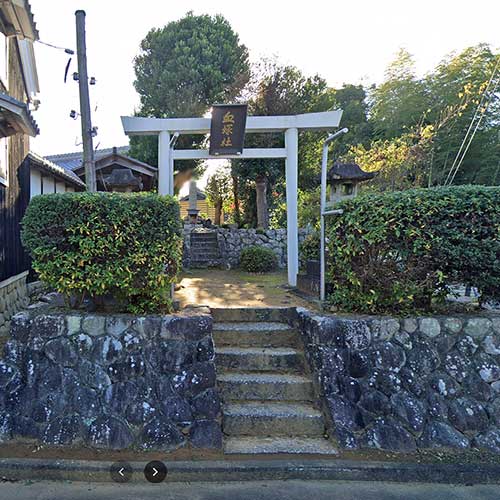MIE – Trifold 三重県

Most native Japanese can tell you what the literal meaning of Mie is. It’s “three layers.” But three layers of what?? That’s what most people don’t know, even many Mie Prefecture residents.
Some locals might believe the urban legend saying that since Mie’s geographical area looks like the katakana character メ (me, pronounced “may”) on a map (see below), it morphed from “me” to “mie.” Ha-ha! Funny, but not true.
Mie Prefecture history experts at the Mie Prefectural Museum (三重県総合博物館) say that the name’s origin has to do with the semi-legendary warrior prince Yamato Takeru (72–114).
He is a most famous figure who appears in the Kojiki and Nihon Shoki texts about Japanese mythology and history. He quashed various rebellions in Japan to subjugate them under the emperor’s rule. However, he met his demise on Mt. Ibuki in Omi Province (Shiga Prefecture) when he fought an evil local god disguised as a big, white boar (or giant serpent according to Nihon Shoki) who sprayed a poison mist on him.
He escaped and tried to heal himself in natural spring water in Gifu (Sekigahara) or Shiga Prefecture (Samegai), but he was seriously wounded. He later made it to Otsusakihama Beach (尾津浜) in present-day Kuwana in Mie Prefecture to happily retrieve the Kusanagi sword he had forgotten before going to battle in the East (Tokyo area).
As he continued onward in Mie Prefecture, he went up Tsuetsuki-zaka Slope (Cane-Assisted Slope, 杖衝坂) on the old Tokaido Road in present-day Yokkaichi. It’s where he used his sword as a cane to help his badly injured self to climb up the steep slope.
According to the Kojiki, it was on this slope when he said:
“My legs feel like they’re bent three-fold, how exhausting.”
-Kojiki
(自分のあしが三重(さんじゅう)に折れ曲がるようになり、苦しい思いをした。)
The museum’s historians believe this is where Mie Prefecture got its name. The kanji characters literally means “three layers” or “three weights,” but when applied to Takeru’s leg, it could have been broken at two places to make it a trifold leg. Ouch! But that’s how painful his legs felt like. It might not have been broken since he was able to keep walking. However, there was bleeding.
At the top of Tsuetsuki-zaka Slope, there’s a small shrine called Ochizukasha (血塚社) marking the spot where Takeru washed his bleeding leg(s). Geez, “Mie” must be the most grisly prefectural name in Japan. Poor Takeru!😢


Right: At the top of Tsuetsuki-zaka Slope is Ochizukasha Shrine where Yamato Takeru washed his bleeding leg. (Both photos from Google Maps street view.)
After the slope, Takeru traveled about 15 km further and got to a place called Nobono (能煩野) where he died. After he was buried, his spirit turned into a great white bird that flew and landed in Yamato Province (Nara) and Habikino, Osaka before going to heaven. Otori Shrine (大鳥神社) in Sakai marks one spot where the great bird (Otori) landed.
As a result of this legend and perhaps to honor its namesake, Mie Prefecture has a few spots related to Yamato Takeru such as the aforementioned Tsuetsuki-zaka Slope (Cane-Assisted Slope named after Takeru’s sword used as his cane) in Yokkaichi, Nobono-Otsuka burial mound (能褒野王塚古墳) in Nobono (Kameyama) designated as Yamato Takeru’s grave in 1879 by the Ministry of Home Affairs, and Hakucho-zuka swan burial mound (白鳥塚古墳), yet another possible burial mound for Takeru in Suzuka where he turned into a white bird. Archaeologically, it is not known exactly who is buried in the Nobono mound.
In 1871, Mie Prefecture consisted of two prefectures, Anoutsu (安濃津県) in the northern half with Tsu and Yokkaichi, and Watarai (度会県) in the southern half. In 1872, the prefectural capital moved from Tsu to Yokkaichi in Mie District. Anoutsu Prefecture was thereby renamed “Mie” after the district’s name.
Finally in 1876, Watarai Prefecture merged into Mie Prefecture to form the Mie Prefecture we know today. The capital also moved back to Tsu.
Old province names: Ise-no-Kuni, Iga-no-Kuni, Shima-no-Kuni, Kii-no-Kuni (伊勢国+伊賀国+志摩国+紀伊国)
*The AI-generated image is for illustrative purposes only and may not accurately depict any particular place or persons in the prefecture.
Sources: https://www.nhk.jp/p/ts/2W7WM664QP/blog/bl/plyK7Np8N6/bp/ppxxyKXXrp/
Origin of other prefectural names (etymologies)
Overview | Aichi | Akita | Aomori | Chiba | Ehime | Fukui | Fukuoka | Fukushima | Gifu | Gunma | Hiroshima | Hokkaido | Hyogo | Ibaraki | Ishikawa | Iwate | Kagawa | Kagoshima | Kanagawa | Kochi | Kumamoto | Kyoto | Mie | Miyagi | Miyazaki | Nagano | Nagasaki | Nara | Niigata | Oita | Okayama | Okinawa | Osaka | Saga | Saitama | Shiga | Shimane | Shizuoka | Tochigi | Tokushima | Tokyo | Tottori | Toyama | Wakayama | Yamagata | Yamaguchi | Yamanashi